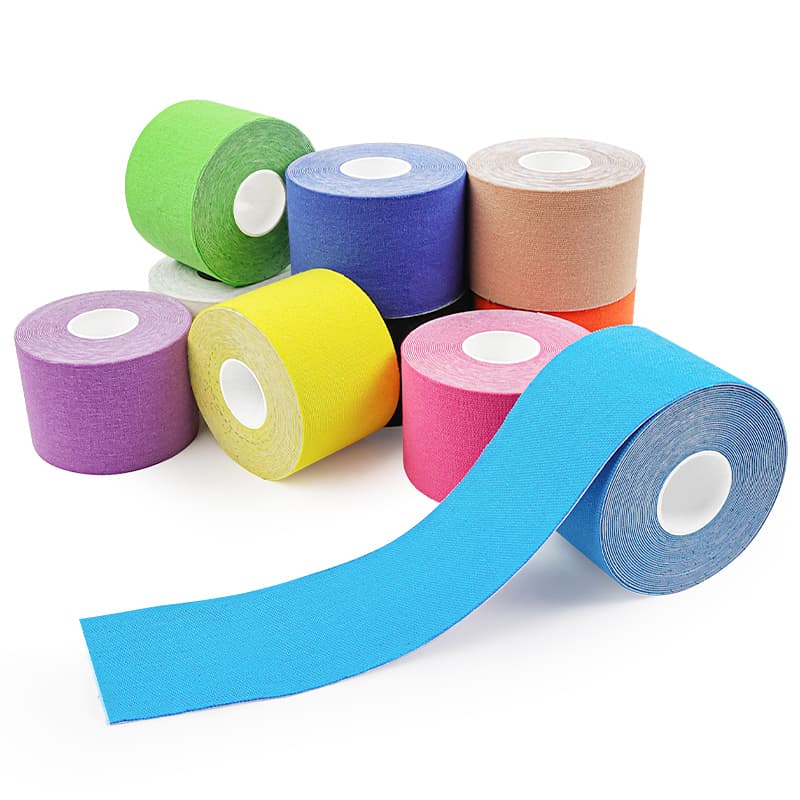There are many models of elastic bandage colors. They’re available in a wide variety of colors. Some centers and hospitals even have their own shade of elastic bandage that they use to brand themselves with. In this article, we provide you the benefits of different elastic bandage colors, and how to choose the right one for your need
What are the types of elastic bandages?
elastic bandage colors are available in a variety of colors, each of which offers its own benefits.
White elastic bandages are the most commonly used type of bandage. They are perfect for everyday use and can be easily hidden under clothing.
Red elastic bandages are often used for sports injuries. They are highly visible and help to alert others to the fact that you have an injury.
Blue elastic bandages are ideal for use on sensitive skin. They are less likely to cause irritation than other types of bandages.
Green elastic bandages are perfect for use in water. They will not absorb water like other types of bandages, making them ideal for swimming or bathing.

Benefits of different elastic bandage colors
While the colors of elastic bandage colors may not seem like they would make a difference, each color actually offers different benefits. Here are some of the benefits that you can enjoy by using different colored bandages:
-Red: Red elastic bandages are great for providing support and compression. They are often used to help reduce swelling and pain in injured areas.
-Blue: Blue elastic bandages are perfect for use on sensitive skin. They are gentle and will not cause any irritation or discomfort.
-Green: Green elastic bandages provide moderate compression and support. They are ideal for use on areas that are not too injured or swollen.
-Black: Black elastic bandages offer the highest level of compression and support. They are often used on very injured or swollen areas.
Which color should you choose?
If you’re trying to decide which color of elastic bandage colors to choose, there are a few things to consider. The most important factor is usually the occasion or purpose for which you’ll be using the bandage. For example, if you’re wrapping a sprained ankle, you’ll want to choose a darker color like black or navy so that any dirt or debris on the bandage won’t be as noticeable. If you’re using the bandage for fashion purposes, however, you may want to choose a brighter color that will stand out.
There are also some health benefits that can be associated with different colors of elastic bandages. For example, green and blue bandages are often used to help reduce swelling and bruising. Red bandages, on the other hand, can help increase circulation and promote healing. Ultimately, the decision of which color to choose should be based on your specific needs and preferences.
Choosing a size
The size of an elastic bandage colors is important because it will determine how much support the bandage will provide. A too-small bandage will not provide enough support, while a too-large bandage can be uncomfortable and cause unnecessary bulk.
To choose the right size, measure the area to be wrapped with a tape measure. Then, select a bandage that is at least 2 inches wider than the measurement. For example, if you are measuring your thigh and the circumference is 16 inches, you would need an 18-inch wide bandage.
It is also important to consider the length of the bandage when selecting a size. Bandages come in a variety of lengths, from 2 yards to 25 yards. To determine the appropriate length, wrap the area to be covered once around with the tape measure. Choose a bandage that is equal to or slightly longer than this measurement.

Why does a person need an elastic bandage?
The human body is amazing in its ability to adapt and heal, but sometimes it needs a little help. That’s where an elastic bandage comes in. An elastic bandage colors can provide support and compression to injured muscles, tendons, and joints. It can also help prevent swelling and bruising.
elastic bandage colors come in different colors, each of which has its own benefits. For example, white elastic bandages are often used for general support and compression. They’re also good at hiding dirt and stains. Black elastic bandages are ideal for athletes because they blend in with most workout gear. They’re also less likely to leave marks on your skin than other colors.
If you’re looking for an elastic bandage colors that provides extra support, try a blue or green one. These colors are often used for knee or shoulder injuries. If you’re worried about your bandage slipping, go for a pink or purple one. These colors have extra grip power thanks to their textured surface.
No matter what color you choose, make sure to wrap the bandage snugly but not too tightly. You should be able to slip two fingers under the bandage when it’s wrapped around your injury. If it’s too tight, it could cut off circulation or cause more swelling. If it’s too loose, it won’t provide enough support.
Conclusion
There are many benefits to using different colors of elastic bandage colors. From helping you stay organized to providing relief for aches and pains, each color has its own unique set of benefits. With so many options available, there is sure to be a color that meets your needs. Give them a try and see for yourself how helpful they can be!



